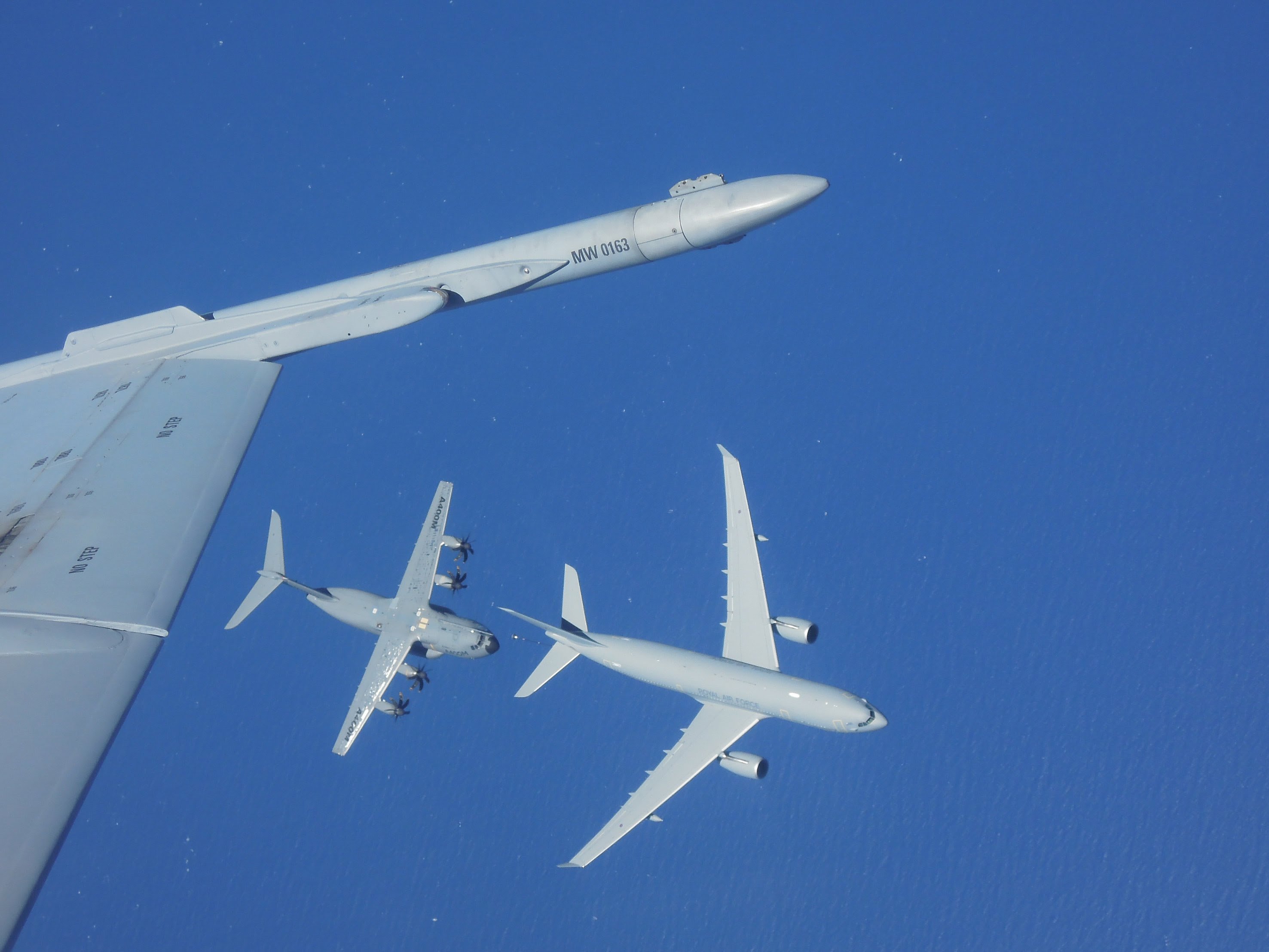2015-06-15 By Robbin Laird
The Paris Air Show is dominated by the commercial sector which in terms of market and money is clearly the more important.
However, if national survival is at stake, it is not the most important market or consideration.
As the world meets in Paris in 2015, national survival is becoming a more pressing concern.
The commercial market is also not the most innovative part of the aviation business, with military evolutions still playing a central role in innovation overall.
This can be seen in many areas, such as materials, propulsion, avionics, electronics, and security.
Innovations in the military sector clearly influence commercial dynamics as well.
For example, in a recent visit to the Boeing Osprey plant near Philadelphia Murielle Delaporte and I visited the composite center of excellence.
The work there is truly amazing and the Osprey is largely a composite airplane.
And it was clear from talking with Tom Jablonski, head of the Composites Center of Excellence (CCOE), at the plant who has worked extensively in commercial applications as well – that the work on both sides of the equation – military and civilian – is crucial for Boeing.
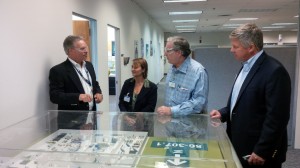
Military aviation is in the throes of fundamental transformation, a transformation which is a combination of the lessons learned from the past decade and the introduction of new platforms, systems and technologies in this decade and the preparation for the decade after.
The “land wars” of the past decade have seen several fundamental changes which are part of the military aviation transformation going forward.
Airlifters have become core elements in the battlespace with precision air dropping and other capabilities becoming a key part of “ground operations.”
The introduction of the Harvest Hawk variant of the C-130 J has introduced the notion that an airlifter can become a mother ship and a weapons carrier for a “ground” force.
Tanking has become a key infrastructure for operations, at sea, on the ground or in the air.
The Osprey has entered into the operational envelope over the past eight years and has transformed forever the speed and range for “ground” forces to operate.
Remotely piloted vehicles have become a key part of the battlespace and the effort to work fusion of information cross-platform clearly now includes both manned and remotely piloted assets.
The ability through Rover to call in fires from sea or air to support “ground” forces has changed forever the notion of integrated fires in support of operations.
This decade will see fundamental transformations as the F-35 becomes a key element for the renorming of US and allied airpower.
The F-35 is at the heart of change for a very simple reason – it is a revolutionary platform, and when considered in terms of its fleet impact even more so.
The F-35, Lightning II, has a revolutionary sensor fusion cockpit that makes it effective in AA, AG and EW.
Allied and U.S. combat pilots will evolve and share new tactics and training, and over time this will drive changes that leaders must make for effective command and control to fight future battles.
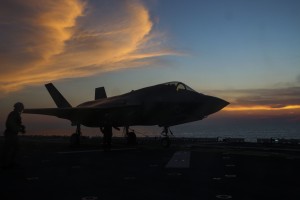
An issue has been that the F-35 has been labeled a “fifth generation” aircraft, a sensible demarcation when the F-22 was being introduced.
But the evolution of the combat systems on the aircraft, the role of the fusion engine, and the impact of a fleet of integrated F-35s operating as a foundational element will make the current term “5th Gen” obsolete.
The global fleet of F-35s will be the first generation for building a foundation for a fundamental change in the way air power operates in overall combat concepts of operations. It is not in and of itself a single aircraft platform; it is about what an integrated fleet of F-35s can deliver to TRANSFORM everything. The decade ahead will be very innovative if what the fleet brings to the fight is learned and applied. Combat warriors, at all ranks, can leverage what they learn and then apply those lessons to reshaping the force over and over.
The F-35 is part of an overall transformation process.
For the Aussies, their Plan Jericho is being put in place to shape what the Australian Minister of Defence refers to as the transition to “fifth generation warfare.”
He made this comment to the surface navy and had in mind the intersection between airpower – notably the F-35 – and the surface navy in providing both force protection and a broader capability to tap into the surface navy’s missile launching capability.
For the Brits, the F-35 is part of the coming of the new UK large deck carrier, which is part of the transformation of the Royal Navy and the Royal Air Force.
I visited the HMS Queen Elizabeth in Scotland at the end of March and then interviewed Royal Navy and RAF personnel in Whitehall shortly thereafter.
The UK evolution is clearly part of the intersection of innovations in military aviation with overall defense innovation, that is to say, airpower is not simply an in-itself capability but is a leaven for change across the force structure.
But the F-35 is not alone as part of the transformation of airpower in this decade.
New weapons – hypersonic included – will enter the battlespace.
New ways of targeting from the air to guide naval, ground and air strikes will evolve.
New tankers and airlifters will become key staples for US and allied air forces.
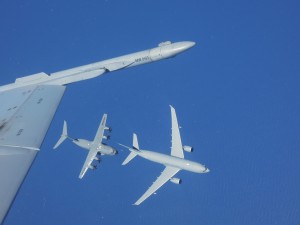
In the coalition operation against ISIL, four allied air forces are flying the new Airbus tanker in support of US and coalition air assets.
The A400M – in spite of the tragic crash – is redefining how European Air Forces are addressing the role of lift within their overall approach to operations.
During a visit to Bricy, the first operational A400M squadron, the commander of the squadron, Lt. Col. Paillard, noted that the squadron was already doing operations with their six A400Ms with a seventh on the way. And the impact was significant for the French forces:
“One of the key advantages of the A400M will be that we can fly helicopters directly from France to the troops which we can not do right now.
We cannot ship the helos directly back to France, currently with our own assets. With the A400M we will be able to do so.”.
In other words, the impact of having the A400M will be strategic for France, whereby interventions can occur directly from France without having to preposition forces in the area of interest.
With regard to the fighter market, there is substantial business to be generated modernizing legacy fighters to work with the F-35.
As Secretary Wynne put it: “In fact, the coming of the global F-35 fleet will enhance overall coalition capabilities and provide the U.S. with an opportunity to provide some key enablers for enhanced coalition effectiveness as well.
Each member of the coalition will now bring a specific set of expertise.
And in that bringing of expertise, we’re finding ways to integrate older technology into the newer systems.”
A good example is the Eurofighter.
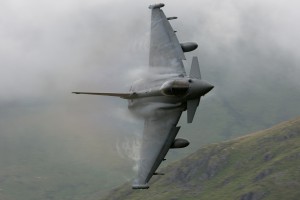
To cite the RAF case, the RAF is undergoing two fighter aircraft transitions at the same time in which the Eurofighter is a key element.
On the one hand, the Tornado is being retired and the Typhoon is subsuming its missions. On the other hand, the F-35B is coming to the fleet and will be working with Typhoon for the period ahead.
These are three very different aircraft built in different periods of aviation history.
The venerable Tornado has seen a significant evolution over its time; from its initial use as an ultra low-level nuclear and unguided weapons bomber to an ISR-enabled precision strike and close support aircraft.
The Typhoon entered the RAF more than a decade ago as a classic air superiority fighter, but is now being asked to expand its effects and to subsume the Tornado missions. The F-35B is entering the fleet as the Typhoon is making this transition.
This will mean that the RAF will be managing a double transition – Typhoon becoming multi-role and the F-35B operating off of land or ships to provide the fifth generation capability to the evolving RAF strike force
The Remotely Piloted Aircraft or RPA market is facing a significant transition as well. RPAs or the misnamed unamanned aerial vehicles (UAVs) are facing fundamental disruptions, rather than straight line progress.
Part of the problem is simply shaping a new approach post Afghanistan.
Part of the problem is their vulnerability to jamming. Part of the problem is the coming of directed energy weapons and the very high lethality which these weapons can deliver to slow moving robotic “airplanes.”
There is a great opportunity for innovation however in this domain.
One way to look at that innovation was suggested during an interview I did last year at the 2nd Marine Air Wing with the commander of the VMU-2 squadron.
Here the CO – Lt. Col. Faught – emphasized the need to get a better air vehicle but to do so with regard to shaping modular payloads.
Clearly the trend line, which the Marines would like to see, is an ability to shape modular payloads to provide for the support missions envisaged for UAVs.
Recently, the defense ministers of Italy, Germany and France signed an agreement (May 18, 2015) to conduct a two-year definition study for a European Medium-Altitude, Long-Endurance UAV which would involve Airbus Defence and Space, Finmeccanica and Dassault Aviation.
Hopefully, the focus is not simply building the son of Predator, but coming up with a new innovative approach that take into account the limitations of current RPAs and able to thrive in the payload revolution on the way.
There is a substantial global fighter market beyond the current mainstream offerings as well.
The Gripen is case in point.
SAAB is a very innovative company but faces clear problems of market access and size.
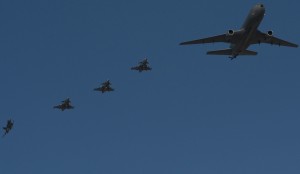
The sale to Brazil of Gripens in 2013 to Brazil could open up opportunities, but Brazil has fallen into political and economic crisis which could reduce the positive impact of the Brazilian decision.
The “Gripen Model” so to speak is of note. First, the aircraft has been designed from the ground up to be supportable. Second, the Gripen has been shaped in an environment in the post-Cold War period where interoperability with NATO and an ability to work in multinational coalitions and conditions has been highlighted.
Sweden has emphasized Gripen as a fully interoperable aircraft.
Third, the Gripen has been designed from the beginning to be a very flexible aircraft. Fourth, the aircraft is designed to work as well in a variety of packages. Thailand purchased the Gripen and then AEW SAAB aircraft and the ground control suite. Finally., SAAB is owned by a large Swedish industrial group and this group is very good at making offset investments. Clearly, offsets are important part of this deal as well.
The Gripen case highlights that manned aircraft have a much broader market than Eurofighters or F-35s and nature abhors a vacuum.
And competition will heat up to fill this market space.
And then there is the question of the longer range strike market.
For the US, the B-3 will be inserted into the next decade of innovation.
European aerospace clearly could shape a longer range strike/ISR/C2 asset which could provide the range and persistence to compliment a shorter range force.
With the weapons revolution underway, the innovations in C2, the need to replace AWACs, and the entry of the A330MRTT and the A400M into the market, it is clear that these platforms or new ones could become the homes for standoff weapons or become the foundation for building an aircraft of interest to Europe, India, Australia and Japan.
Whether it is called a medium range ISR/Strike asset is beside the point and clearly US will not be building an airplane in this category, other the Russians and Chinese will and the Europeans could forge a global coalition, which would take imagination and networking as much as money.
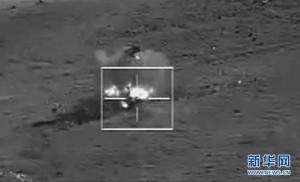
The Chinese and the Russians are ramping up their global assertiveness and activity as well.
And are looking to expand their client relationships to sustain and support their global agendas and their aerospace industries as well.
It is quite likely that the Chinese and Russians will build and display aircraft which will be impressive at air shows.
As the electronics and fusion of date becomes a key discriminator in operations and will not be visible at airshows, propulsion plants and turning ratios will be and here the Russians and Chinese will seek to demonstrate their competitiveness.
Clearly, both China and Russia will seek third world sales to augment their aerospace industry.
For Russia, India remains a key ally. Yet the recent Rafale deal with India may pose a significant threat to that relationship.
In April of this year, India decided to do a government-to-government deal and to buy 36 Rafales directly from the Dassault factory.
By buying 36 aircraft directly through a government-to-government agreement, the IAF will get combat ready aircraft much more rapidly than via any other means and at a lower cost. Simply put, one can project the cost of an aircraft coming off of a mature production line; projecting the cost of aircraft not yet coming off of a new production line is alchemy.
And both the line and the plane have matured so that the IAF will get a good product to meet its pressing combat needs.
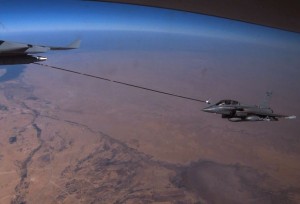
Fifteen years have passed since the first Rafale entered in service in the French Navy.
“We started very small with a fleet of only ten aircraft up until 2004”, recalls Marie-Astrid Vernier, currently director of military support at Dassault Aviation and who has worked on the Rafale since 1994. The current French Rafale fleet has been built with the delivery of four different “tranches” of aircraft which have been upgraded over the years into various standards, the latest one being the Standard F3R to be delivered in 2018.
Today’s Rafale F3 has little to do with the very first F1: “Retrofitting the very first planes from a F1 standard to a F3 standard takes far more time than upgrading later-built planes”, explains Capitaine de Vaisseau Sébastien Fabre, formerly in charge of the support of the Rafale fleet within the French MoD. As the thousandth modification was achieved a few months ago, the latter stressed in an interview that “60% of these changes relate to standard and technical tracking, while the rest has to do with improving equipment and support tools”.
Today’s 2015 Rafale is a rather different bird from the 2000’s Rafale, as new technologies allowed for new operational missions, which in turn drove new technical requirements.
As India flies Rafale and Indian industry works with the French to sustain the aircraft, a new era in Indian military aerospace could open up., one where the Indians will look at the Russian contribution and perhaps pause.
Such a pause could have significant impact on the global fighter market.
In short, we are facing a decade of significant innovation.
The reality of military aviation is that there is always a reactive enemy and the dynamics of change are fluid.
And military aviation is so inextricably intertwined with overall defense capabilities, that the success or failures of those forces are the ultimate market indicator.
This article was first published by Breaking Defense.


